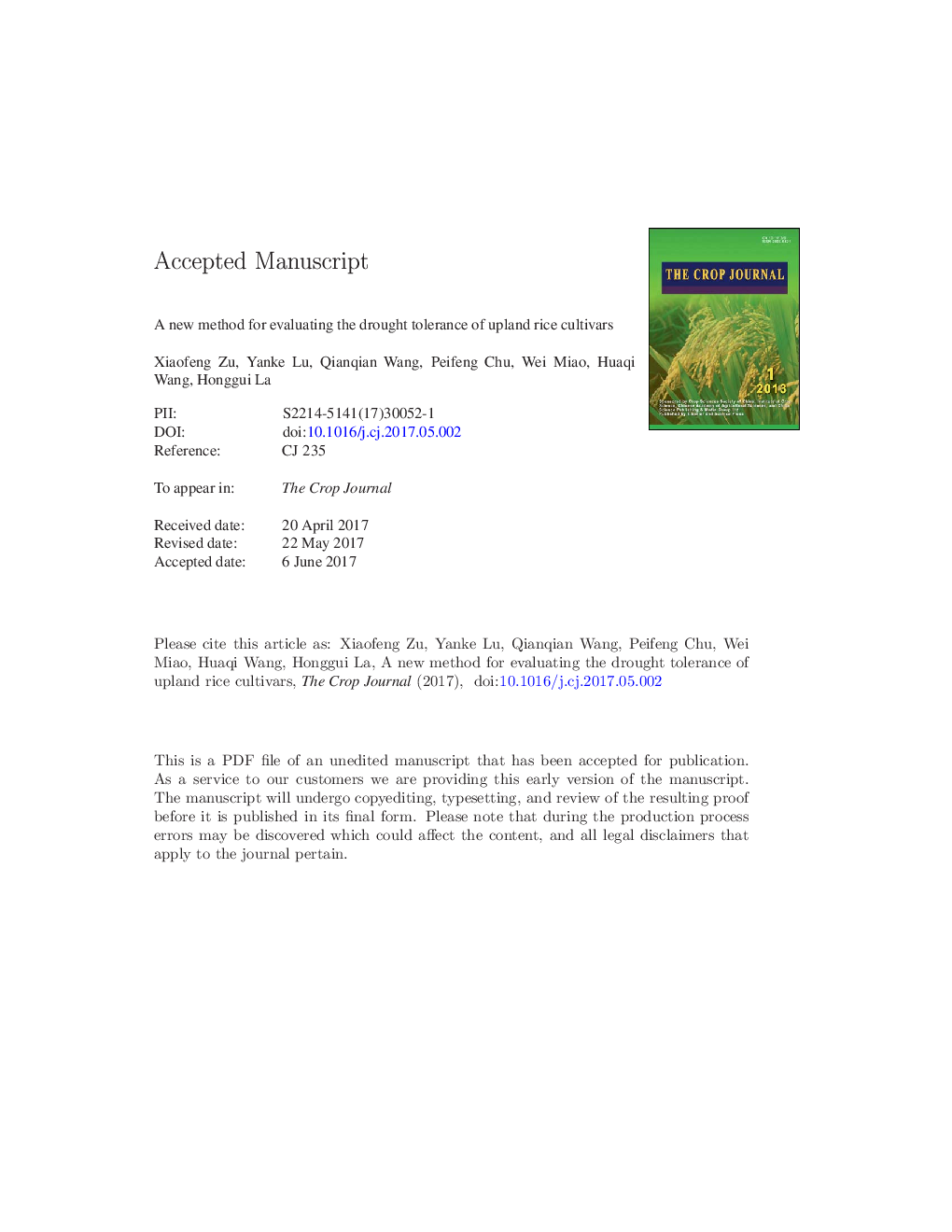| Article ID | Journal | Published Year | Pages | File Type |
|---|---|---|---|---|
| 8408817 | The Crop Journal | 2017 | 18 Pages |
Abstract
Worldwide, approximately 27 million ha of rice are grown in upland rather than paddy fields, and is subject to drought stress. To counter this stress, it is desirable to breed new rice cultivars with improved drought tolerance. For breeding purposes, especially for breeding upland rice, it is desirable to develop a simple and accurate method to evaluate rice drought tolerance. We describe a new method that can be used to evaluate efficiently the drought tolerance degree (DTD) of upland rice cultivars, and call it the DTD method. DTD is defined as the mean of the ratios of green leaf length to total leaf length of the top three leaves in every rice seedling after drought treatment, and thus takes values from zero to one. To test whether the DTD method works effectively to evaluate drought tolerance of upland rice cultivars, we determined the DTD values of 13 upland rice cultivars showing varying degrees of drought tolerance in drought-tolerance trials. The idr1-1 mutant, which displayed the strongest drought tolerance of the 13 cultivars as identified by drought-tolerance trials under severe drought stress, had the highest DTD value and 297-28, displaying the weakest drought tolerance, had the lowest DTD value. Further analyses of water potential, survival rate, panicles per plant, spikelets per panicle, seed setting rate, yield per plant, and contents of proline, chlorophyll, and malondialdehyde (MDA) indicated that DTD values are in general correlated with the values of these traits, making this new method useful for assessing the drought tolerance of upland rice cultivars. These results show that the DTD method is a simple, direct and relatively accurate evaluation method for drought-tolerance breeding of upland rice.
Related Topics
Life Sciences
Agricultural and Biological Sciences
Agronomy and Crop Science
Authors
Xiaofeng Zu, Yanke Lu, Qianqian Wang, Peifeng Chu, Wei Miao, Huaqi Wang, Honggui La,
